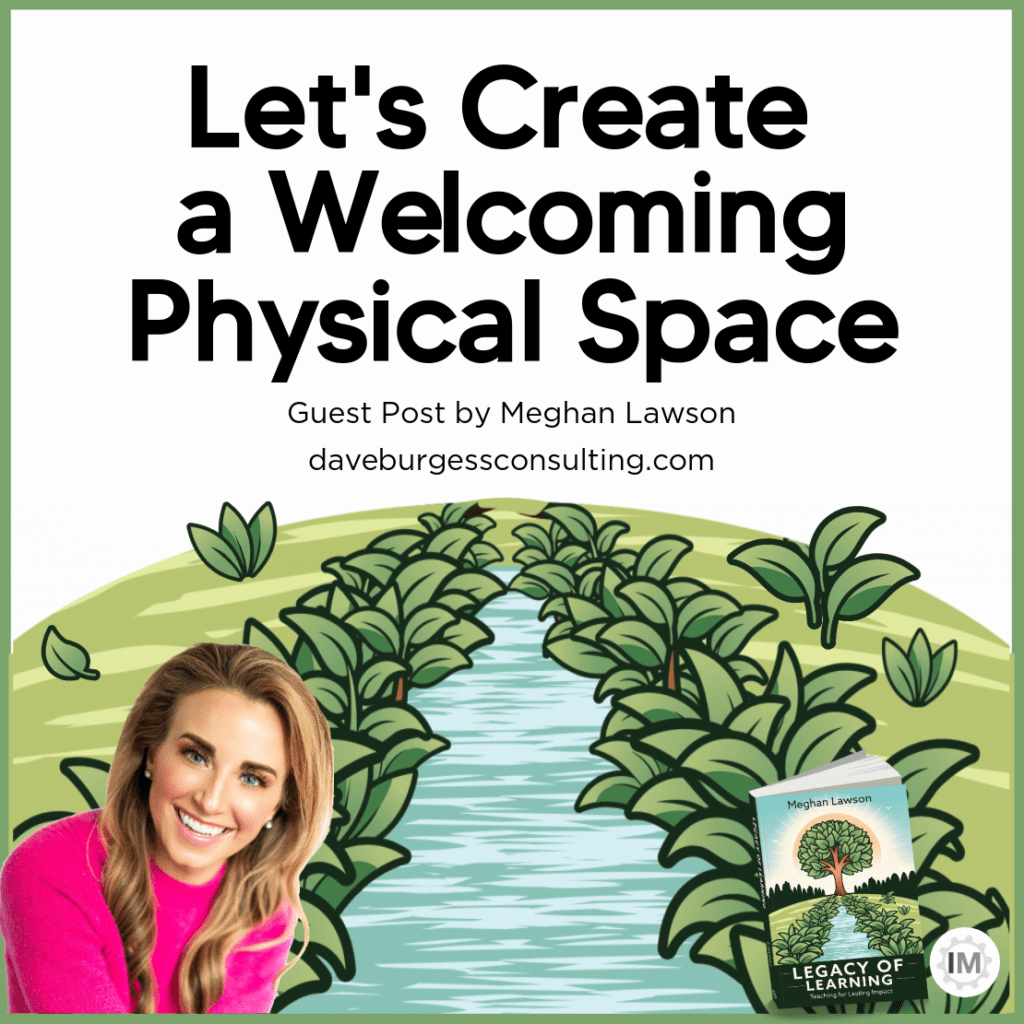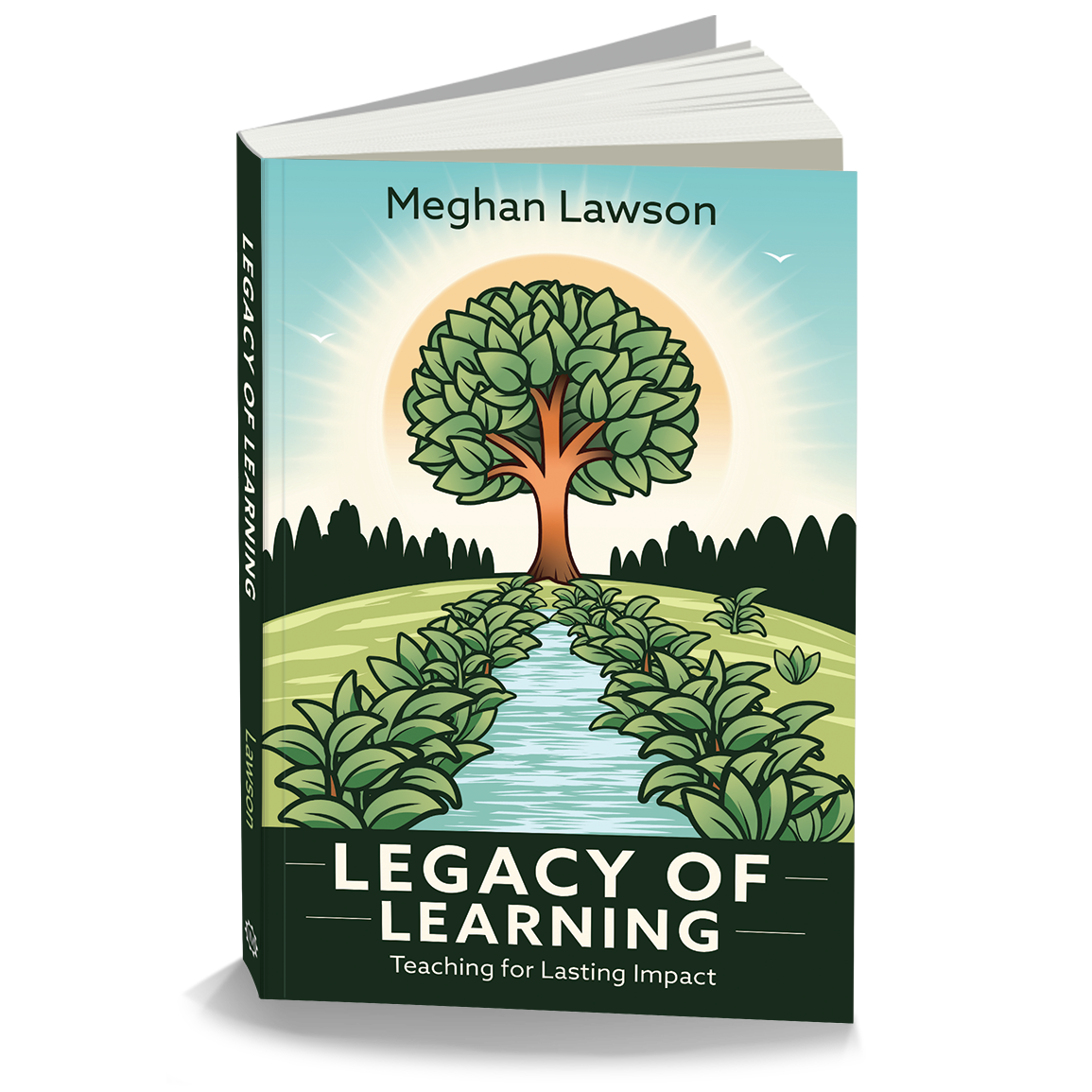Today's guest post is brought to you by an outstanding educator and a lover of learning who believes in the goodness of people. She began her career in the English Language Arts classroom. So, inevitably, her mantra is "Words Matter." She has worked in all levels of K–12 education as a teacher, school administrator, district administrator, and educational consultant. She is the author of the Amazon #1 New Release book--Legacy of Learning!
Can't wait to learn more from Meghan Lawson!
Take it away, friend!
Guest Post by Meghan Lawson
The way we organize our physical spaces defines the moments we create and the way people feel when they spend time with us. If we’re having a meeting with teachers and we sit at the head of a rectangular table, who’s in charge? Whose meeting is this? The answer is clear. If we’re seated at a round table, no one is in charge. This meeting belongs to all of us, and we all have equal say in this space. I love the magic of a round table. Peter Block describes the power of circles in Community: The Structure of Belonging: “Physical space is more decisive in creating community than we realize. Most meeting spaces are designed for control, negotiation, and persuasion. We always have a choice about the way we rearrange and occupy whatever room we are handed. Community is built when we sit in circles, when there are windows and the walls have signs of life, when every voice can be equally heard and amplified, when we all are on one level.”
Certainly, larger circles feel different from smaller circles, and smaller circles tend to be more conducive to the exchange of ideas. In my experience, not every meeting room has windows or walls with signs of life, but the idea that I’m empowered to change the room configuration to best match the learning experience is an important and powerful one. The furniture or room does not need to be perfect for us to be positively impactful with the way we arrange it.
Meetings are a great place to model room configurations that foster desired learning outcomes. If our staff meetings, work sessions, or professional development are organized with teachers seated in rows facing the front of the room, we should not be surprised when this is how our classroom spaces are organized. Every move we make is modeling and sending a message about what we value. If our desks are in rows, we send the message that everyone’s focus should be on the front of the room, and usually, what can be found at the front of the room is the teacher. Sometimes, this is exactly where the focus needs to be, but if this is always where the focus is, we may be sending the message that the teacher’s voice matters most in the classroom. It’s difficult to build an engaging and connected learning community if there is only one voice that truly matters. Since school is hectic, people don’t always pick up on the intentional modeling we do, so we need to not only model good practices for our students and staff but also name what we are doing and why we are doing it that way.
I'd love to hear about the ways you create a welcoming space for your learners. Please connect with me using the links below.
- Meghan
Thank You, Meghan!
Thank you, Meghan!
If you don't already, follow Meghan on X (Twitter) at @Meghan_Lawson, Instagram at meghanlawsonblog, and on her website at meghanlawson.com for more amazing content!
Be sure to check out her brand new book, under the IMpress label, Legacy of Learning: Teaching for Lasting Impact right HERE. You won't regret it!


